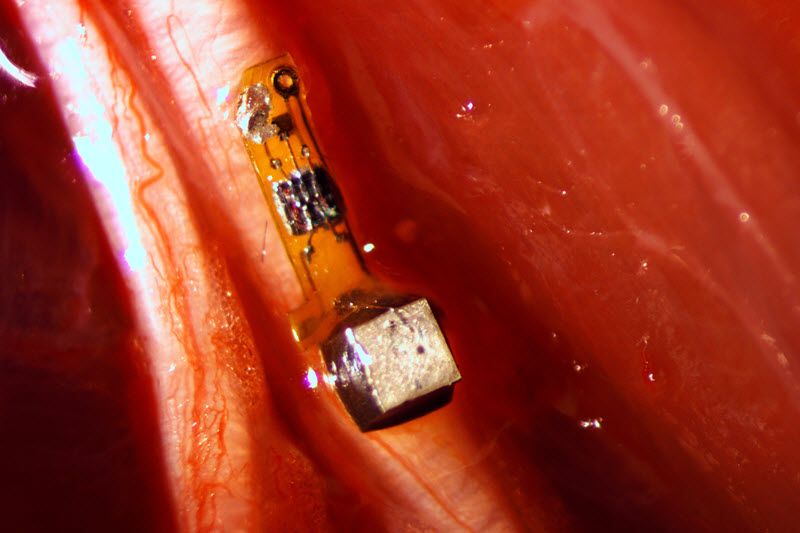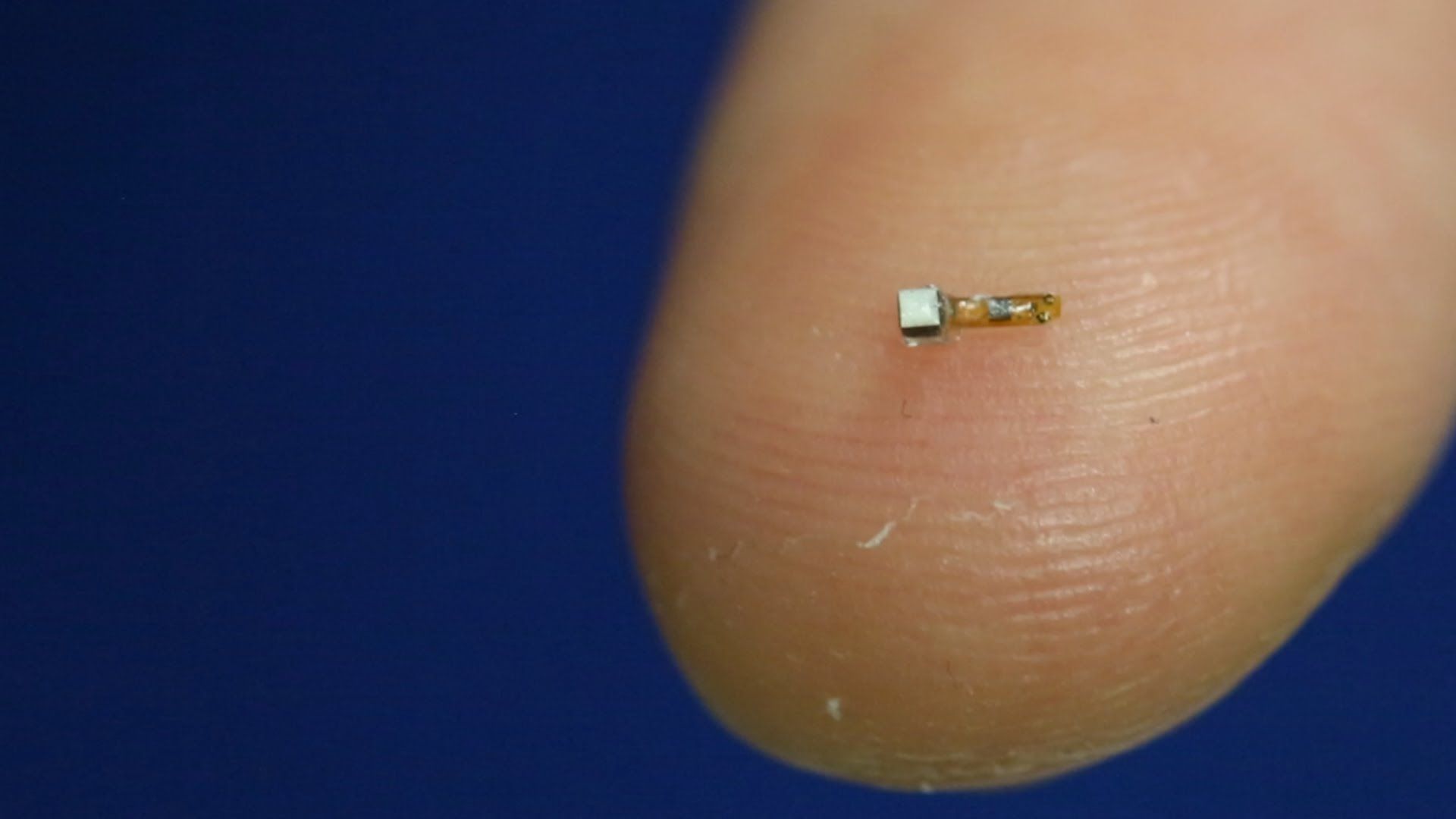
Prototype wireless battery-less “neural dust” mote (3 × 1 x 1 millimeters) with electrodes attached to a nerve fiber in a rat. The mote contains a piezoelectric crystal (silver cube) that converts ultrasonic signals to electrical current, powering a simple electronic circuit containing a transistor (black square) that responds to the voltage generated by a nerve firing and triggers the piezoelectric crystal to create ultrasonic backscatter, which indicates detection of a neural signal. (photo credit: Ryan Neely/UC Berkeley)
University of California, Berkeley engineers have designed and built millimeter-scale device wireless, batteryless “neural dust” sensors and implanted them in muscles and peripheral nerves of rats to make in vivo electrophysiological recordings.
The new technology opens the door to “electroceuticals” — bioelectronic methods to monitor and record wireless electromyogram (EMG) signals from muscle membranes and electroneurogram (ENG) signals from local neuron electrical activity, and to stimulate the immune system, reduce inflammation, and treat disorders such as epilepsy.
Read more










Comments are closed.